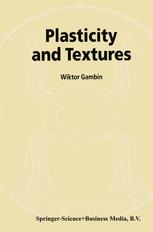

Most ebook files are in PDF format, so you can easily read them using various software such as Foxit Reader or directly on the Google Chrome browser.
Some ebook files are released by publishers in other formats such as .awz, .mobi, .epub, .fb2, etc. You may need to install specific software to read these formats on mobile/PC, such as Calibre.
Please read the tutorial at this link: https://ebookbell.com/faq
We offer FREE conversion to the popular formats you request; however, this may take some time. Therefore, right after payment, please email us, and we will try to provide the service as quickly as possible.
For some exceptional file formats or broken links (if any), please refrain from opening any disputes. Instead, email us first, and we will try to assist within a maximum of 6 hours.
EbookBell Team

0.0
0 reviewsThe classical, phenomenological theory of plastically anisotropic materials has passed a long way: from the work of von Mises presented in 1928, and the HilI formulation given in 1948, to the latest papers on large elastic-plastic deformations of anisotropic metal sheets. A characteristic feature of this approach is a linear flow rule and a quadratic yield criterion. Mathematical simplicity of the theory is a reason of its numerous applications to the analysis of engineering structures during the onset of plastic deformations. However, such an approach is not sufficient for description of the metal forming processes, when a metal element undergoes very large plastic strains. If we take an initially isotropic piece of metal, it becomes plastically anisotropic during the forming process, and the induced anisotropy progressively increases. This fact strongly determines directions of plastic flow, and it leads to an unexpected strain localization in sheet elements. To explain the above, it is necessary to take into account a polycrystalline structure of the metal, plastic slips on slip systems of grains, crystallographic lattice rotations, and at last, a formation of textures and their evolution during the whole deformation process. In short, it is necessary to introduce the plasticity of crystals and polycrystals. The polycrystal analysis shows that, when the advanced plastic strains take place, some privileged crystallographic directions, called a crystallographic texture, occur in the material. The texture formation and evolution are a primary reason for the induced plastic anisotropy in pure metals.